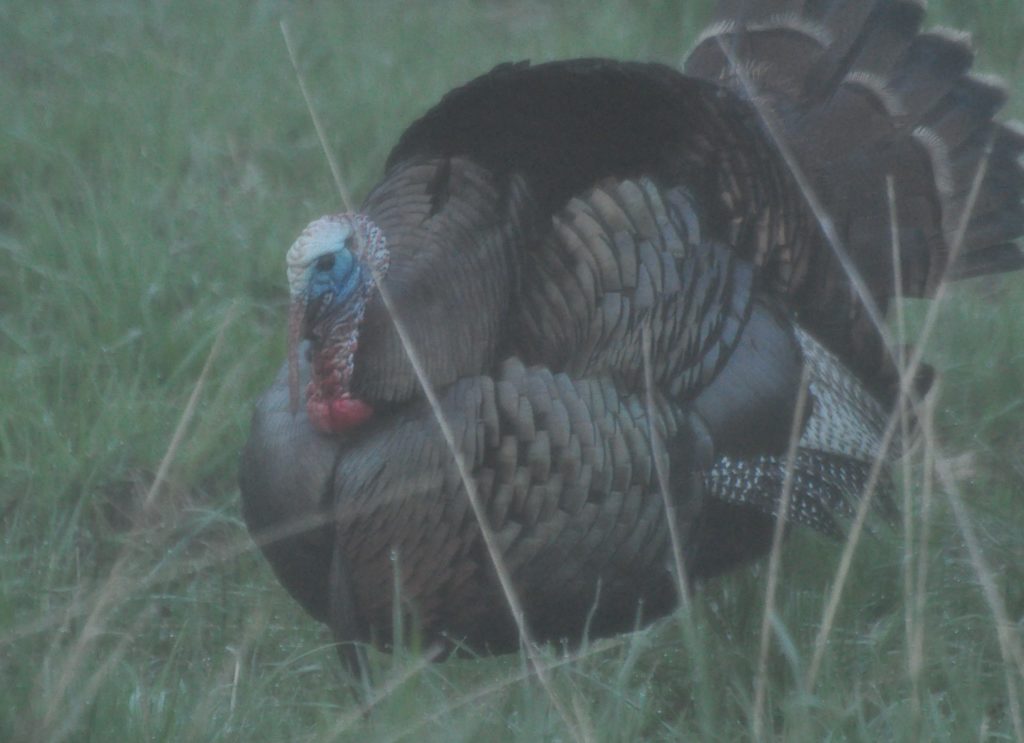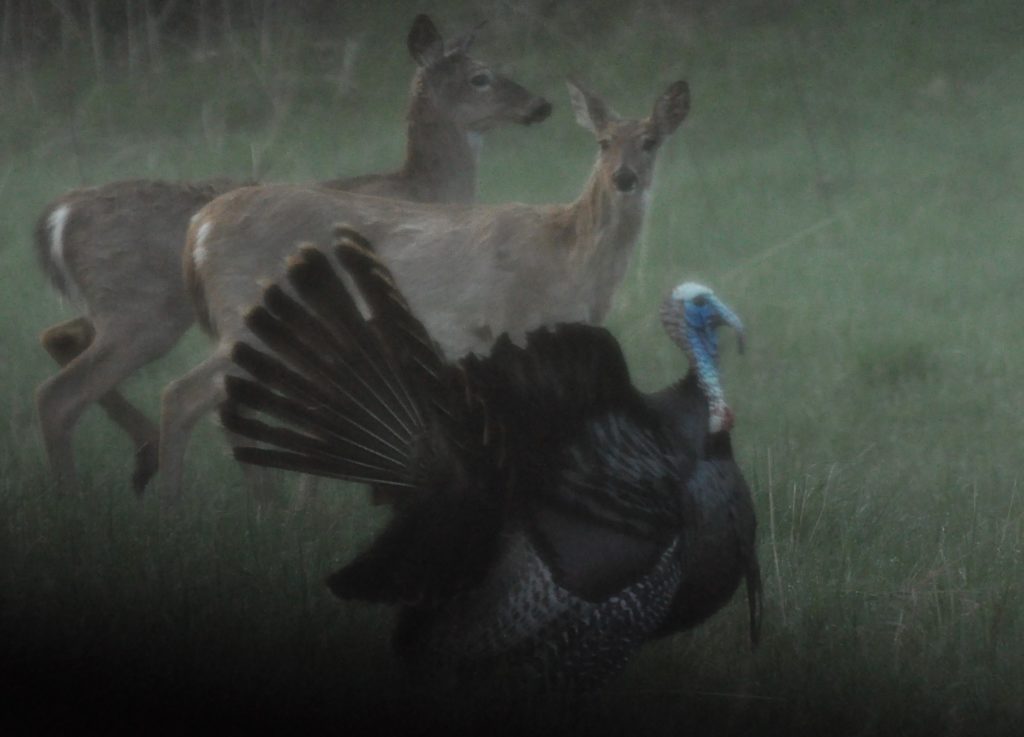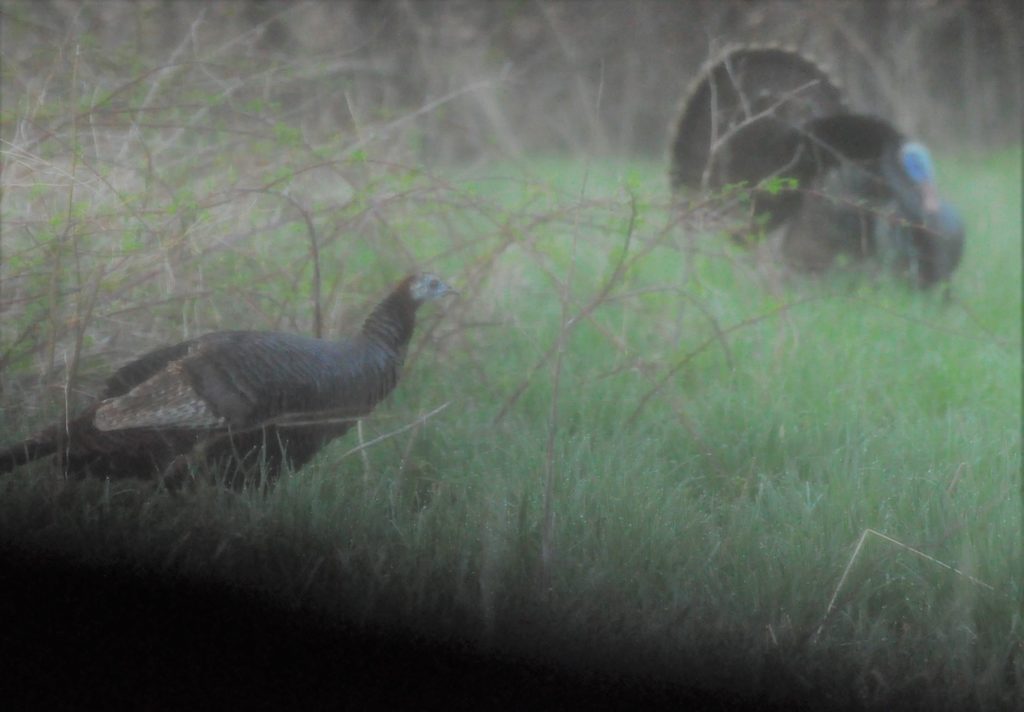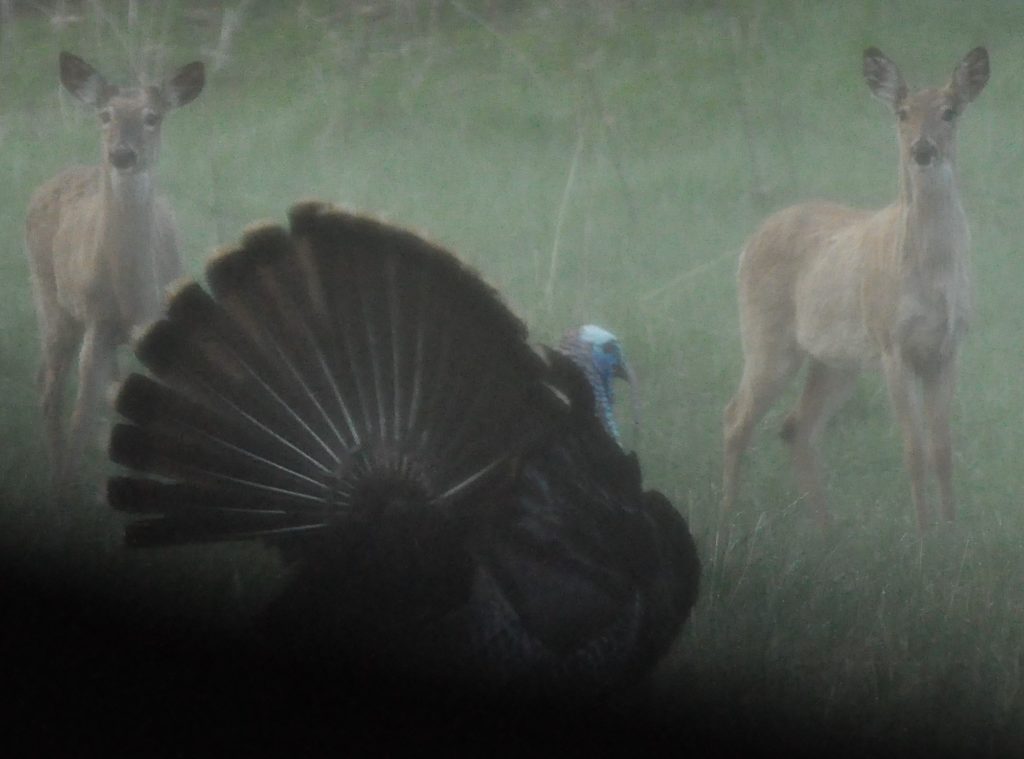Photography courtesy of Lowell Washburn, all rights reserved.

Forty degrees. Clear skies. Moderate breeze. Hard to imagine more perfect conditions for a morning turkey hunt. Things were already looking good. The stars were just beginning to fade when, from farther back in the oaks, a roosted gobbler began to go completely off his rocker. Deciding not to move any closer, I quickly popped up my archery blind at the edge of a narrow grassy clearing.
Once set, I fired off a quick series of “test yelps”. The gobbler liked what he heard and answered back. From then on, every time I touched a call the bird would immediately cut me off with double and triple gobbles. Later, after he had flown down in the half light, the incessant gobbling continued. When a dense fog suddenly descended on the landscape, it didn’t seem to dampen the turkey’s enthusiasm in the least. After enduring several consecutive mornings of henned up toms, it seemed likely that I had finally encountered a bird that was all by himself.
When I hit the call again, there was an immediate response. And then suddenly the gobbling grew louder. The volume increased so quickly that I knew the bird had be literally running in my direction. My first visual came at forty yards; a quick flash of wings as the gobbler cleared a deadfall. And then he was there, coming to a halt somewhere between 15 and 20 yards from where I sat. Despite the low light and foggy conditions, the bird was spectacular – gobbling and strutting in all his iridescent splendor.
Grasping the longbow, I quietly placed an arrow on the string. There was little question that I had the bird dead to rights. There was no need to hurry. No need to cut the show short. There was even plenty of time for some souvenir photos. I mean, what could possibly go wrong?
Well, maybe a pair of white-tails passing downwind at 15 yards would be a good start. In spite of the light breeze, there was no way that I was going to get away with this one. Sure enough, the deer soon went from relaxed, to curious, to full out alarmed. After a bit of stomping and blowing, the pair quickly blasted back into the timber. All this did not go unnoticed by the gobbler, of course. By the time the deer had disappeared, the tom had folded up shop and began walking away.

I started calling again and amazingly, the turkey stopped and then went back into the strut. I kept pleading and the gobbler had soon returned closer than ever. There was no need to hurry. No need to cut the show short. I mean, what could possibly go wrong?
Well, maybe a hen emerging from the brambles and passing between me and the lonesome gobbler would be a good start. Although the morning show had survived light dampening fog and stampeding deer, this unwelcome component would prove too much to overcome. With the gobbler no longer presenting a lead pipe certain shot, I watched in agony as he slowly followed the hen across the narrow clearing and into the fog bound woodland. I knew the hunt was over. But even as the birds were still disappearing into the shadows, I couldn’t help but wondering what my chances were of catching that same bird, once again all by himself, when the sun comes up tomorrow morning.

“Oh, I’d say about one in a million,” I thought to myself. And then I thought of that famous line from Jim Carry’s movie Dumb & Dumber – “So you’re sayin’ there’s a chance!”
I guess that’s what keeps turkey hunters returning to the woods morning after morning. There’s always a chance. LW


 Tom Cope
Tom Cope Sue Wilkinson
Sue Wilkinson Susan Judkins Josten
Susan Judkins Josten Rudi Roeslein
Rudi Roeslein Elyssa McFarland
Elyssa McFarland Mark Langgin
Mark Langgin Adam Janke
Adam Janke Joe Henry
Joe Henry Kristin Ashenbrenner
Kristin Ashenbrenner Joe Wilkinson
Joe Wilkinson Dr. Tammy Mildenstein
Dr. Tammy Mildenstein Sean McMahon
Sean McMahon